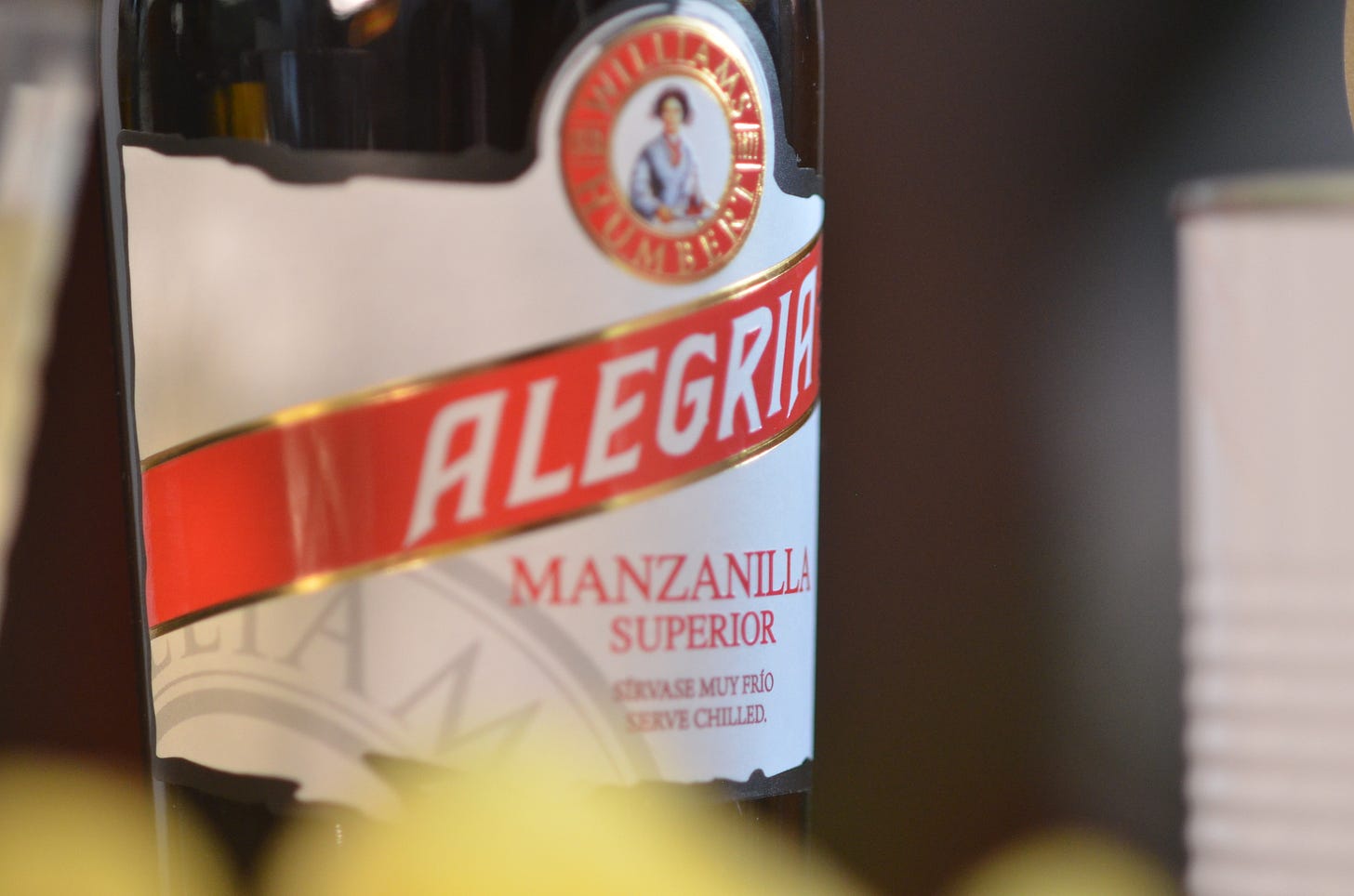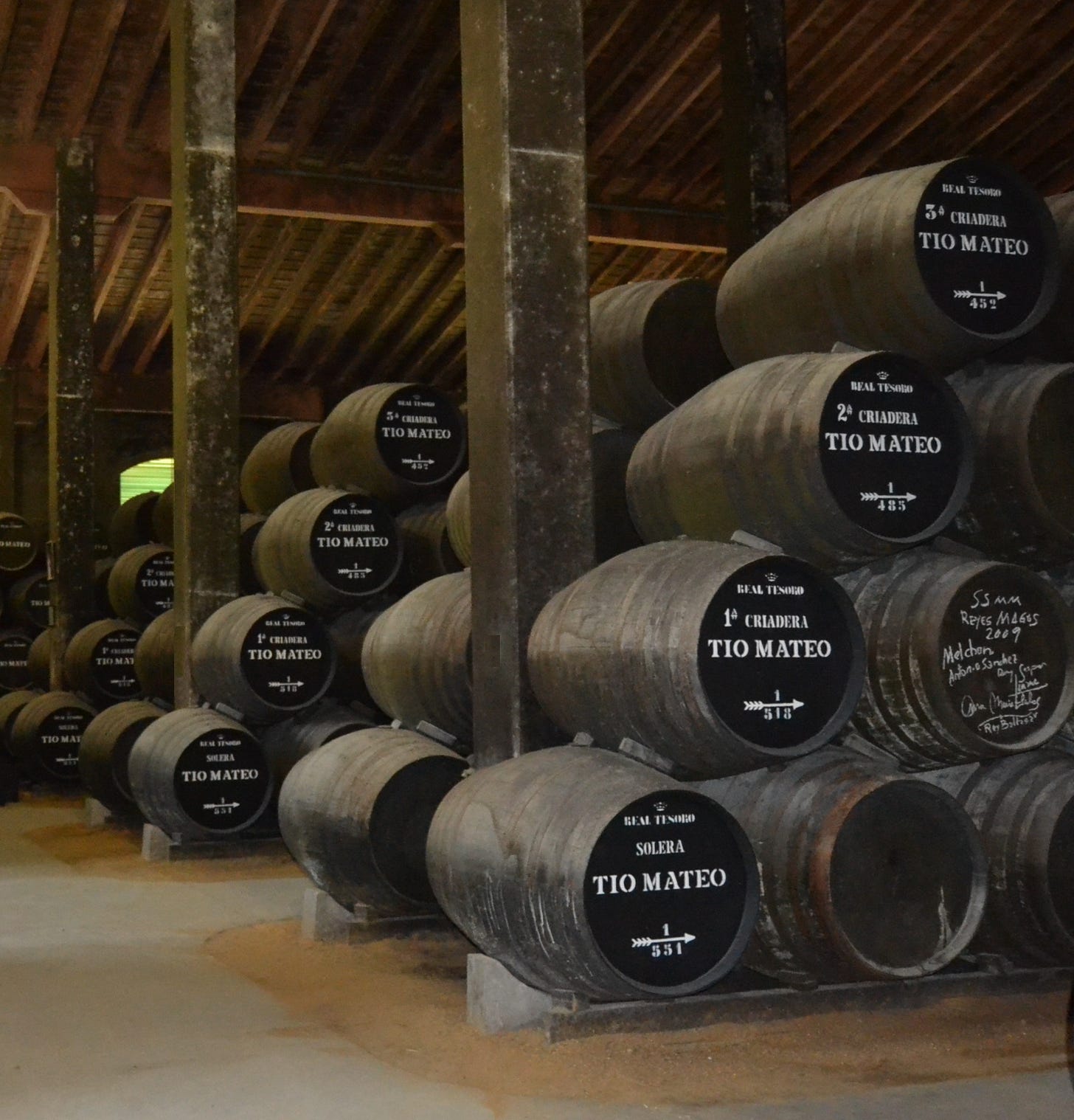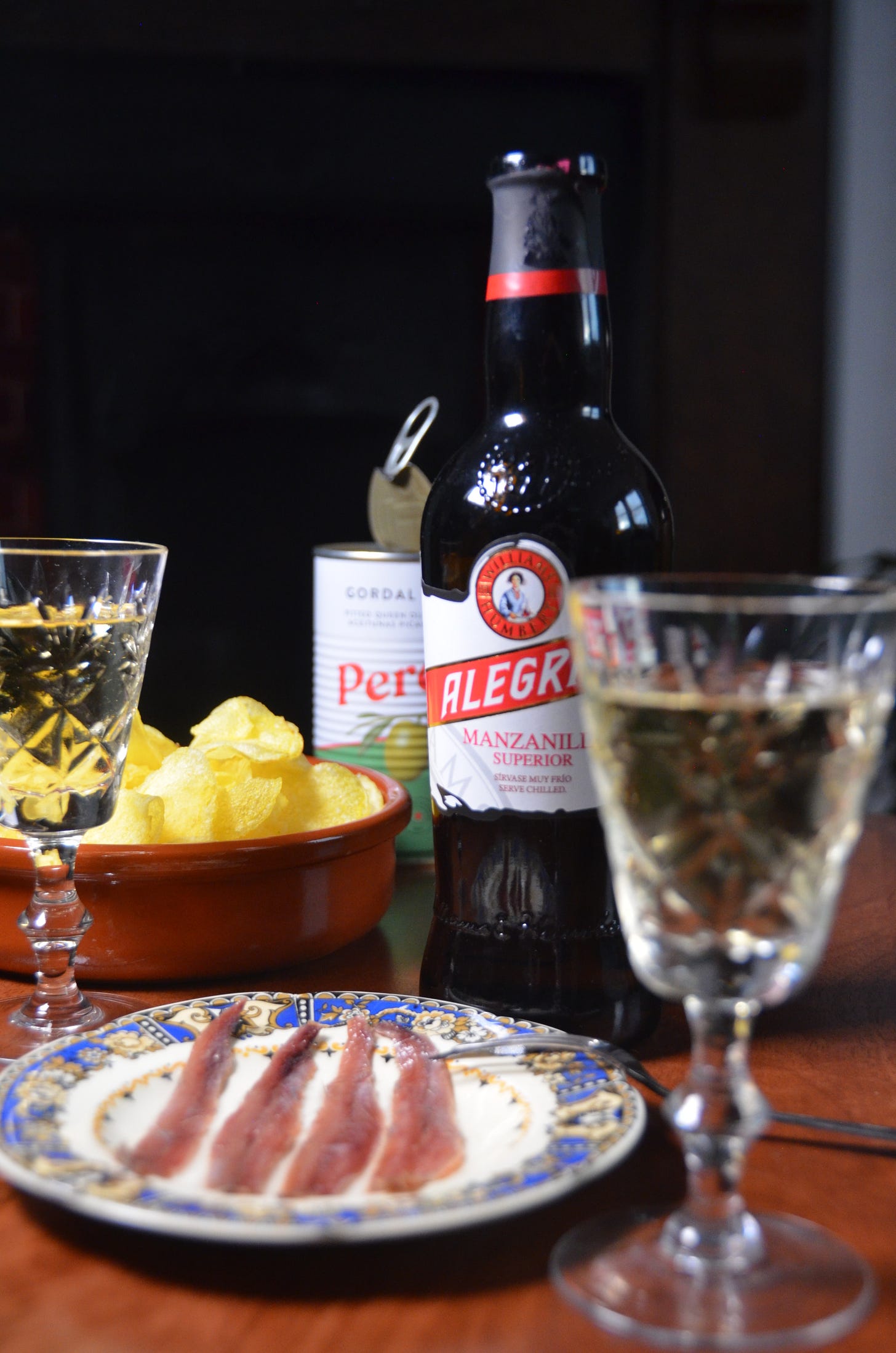Fans of the hit show Frasier are well acquainted with the eminent radio doctor’s tipple of choice. How many times have we heard the line upon his on-screen brother’s arrival to his Seattle apartment, “Sherry, Niles?”
I have been making my way through the show this past year. I’d get home sometime after midnight on weekends, after long stints on the floor in an increasingly busy venue in Chelsea. The less affluent (don’t get me wrong, the rents here are by no means cheap) streets around Clapham Junction Station would be heavy with drunken footsteps, sirens and the many good times flowing out from the neighbouring pubs and bars. The kebab shop beneath our apartment would be working hard to line stomachs for the early hours drinking to come, or helping those heading home to softer hangovers in the morning, slice after slice of doner meat falling into pitas.
I’d flick down the kettle and pull the foil lid from an Itsu noodle pot, tearing open the miso broth sachet and squeezing it over the dehydrated noodles. I’d pour myself a Bushmills 10 year old, before carrying my dinner and drink to the bedroom and V’s desk. She would have kindly loaded our latest episode up on the MacBook, already skipping past the ads for me. This became my after-work ritual. The show helping to put the floor behind me; the many demands of the night, the absence of polished cutlery mid-way through service, the missed check(s), a broken bar stool, all faded into another 20 minutes or so of Frasier falling over his pompousness, or Niles falling over his love for Daphne. I sipped my whiskey and began to unwind while the Crane brothers shared another sherry.
There is a lot to like about this eclectic band of fortified wines made from grapes grown near the city of Jerez, in the Andalusian region of southern Spain. I could also say that, for some, there is also a lot not to like about sherry too. It can be a polarising and, at times, downright confusing beverage. A couple of years back, I sat in a classroom inside the WSET school along Bermondsey Street (side note: check out Jose’s Tapas Bar a few doors away—hell, order the sherry flight!). Back to school, we had worked our way through a selection of white wines, red wines and port. We then moved on to sherry.
I already knew from the text book that sherry was not like anything else we had touched upon. Made using some complex system known as the solera, the final styles are the result of one of three types of ageing, with mysterious Palo Cortado taking it upon itself to straddle between two. Then there is Pedro Ximénez, sweet sherry but for the love of the test do not confuse it with Harvey’s Bristol Cream. The first sample was poured, the teacher informing us that it was a fino. We lifted our glasses; first examining the appearance, then sniffing; Is that wet grass? No, is that camomile buds left to stew in sea water? We sipped our finos and the classroom was soon filled with Whoas!, What the? and even a couple of Yucks!
A fino, along with manzanilla sherries—like-for-like a fino but having been aged under flor (explored further in part 2) in the seaside town of Sanlúcar de Barrameda—are incredibly dry. They can best be appreciated on summer nights, snacking on briny olives or salty anchovies. To go all out, I’d say you would be hard pressed to better define happiness than to be sitting outside a small taberna in coastal Cádiz, watching the sun sink into the Mediterranean with a little glass of house fino that set you back a couple of euros. Picking at olives harvested a few miles inland, you think only of repeating the same scene for a summer of sunsets to come.
I could understand my classmates who found the fino to be a little over-confrontational. It’s easy to always fall back on Marmite’s you either love it or hate it, but there are certain foods and beverages that are simply that. They do not sit on the fence. They are self-proclaimers and proud of it and sherry, in all its guises, is just that. I love it! And I am not alone.
Strengthened by the increasing appeal of its drier offerings—Waitrose reports sales up by almost 12% for these styles over the past year—Sherry is making small, meaningful steps against a large decline in sales from its heyday in the late 70s.*
*Ignore the wine snobs, granny sherry is delicious by
provides a good counter argument to the singular attention and mantle given to drier styles as the bright stars of the sherry cannon. Drawing attention to the cultural (especially in the UK) significance of sweeter styles, this post also reminds us that, particularly at this time of the year, these sherries are a damn fine choice.Despite a brief bump in sales during the pandemic—when most of us were looking for anything to do, our days punctuated by something different to drink—the news for sherry has not been good.
Back in 2016, reports detailed UK sales falling by roughly half in the ten year period from 2005 to 2015. Sadly for sherry, the UK matters, being the largest consumer behind its native Spain. This all reads light against the backdrop of global sales being down from 180 million litres in 1979, to just 27 million litres in 2022. It remains to be seen if sherry can return to sales of old. Brexit and duty increases in the UK have certainly not helped, but I believe/hope there is a healthy market ready to celebrate all things sherry.*
*Sherry’s salvation may in fact lie in the increasing regard for its unfortified wine offerings, known as vino de pasto. FTF will not be touching on these ‘new wave’ wines here but recommend Not Your Father’s Sherry by
as a great place to start in perhaps finding an answer to ‘Jerez's existential crisis.’If you’re a drinks enthusiast then there is so much to appreciate about sherry’s production (keep reading), or if you are just an inquisitive type and find yourself lost in the booze section of the supermarket then head to the fortified wines and pick out a bottle, don’t pay much thought as to whether it’s an oloroso, fino or Pedro Ximénez. Find out about it as you drink. Sherries are also wonderful value when grasping the time and patience that’s gone into making them, averaging around £12-£14 a bottle for the larger-known brands. So what about these bodegas and their solera systems?
A bodega is best thought of as a warehouse used by sherry houses to age their wines. The solera process employs different barrels, or criaderas, to produce a consistent product year-on-year. Each layer holds wines at different stages of maturation; the youngest at the top, with the oldest (solera) at the bottom ready for bottling. After some, importantly not all, of this wine is bottled, the barrel is then topped up from the next oldest criadera, this barrel replenished from the next, until tracing back to the youngest wines. This process continues in perpetuity, with wines left for many years to work through the solera, maturing as they go and taking on the distinct characters of their individual ageing process; be it biological, oxidative or mixed ageing (explored further in part 2).
Back in Bermondsey, a sample of fino before me, I was soon transfixed by the complexity of its long journey here. I took another sip wondering how the time spent in each criaderas had helped in its development. And this was just one type of sherry. What about an oloroso or Pedro Ximénez? I had a lot to learn.
Frasier pours his sherry from a glass decanter that stands proud on his side bar. Sherry is ever-present in the show, bar an episode where the brothers are left bereft in an inexplicably dry apartment. The Cranes have perhaps helped cast sherry as a drink for the pedantic, the snooty, while the age-old trope of dusty bottles of Bristol Cream, tucked away in grandparents’ cupboards to be presented year after year at Christmas, has certainly helped stunt sherry’s coolness. These perceptions, however, are being challenged. Perhaps not yet a movement, but certainly a rumbling can be heard—something to the beat of, Sherry has a lot going on!
It’s early evening here. V is finishing up her workday. I open a tin of Ortiz anchovies and Perelló olives, tear open a bag of San Nicasio patatas fritas. I take the half-bottle of Williams & Humbert Manzanilla Alegría (all of £6.99) from the fridge.
Removing the foil from the neck, I call out to V, “Sherry, Chérie?”









